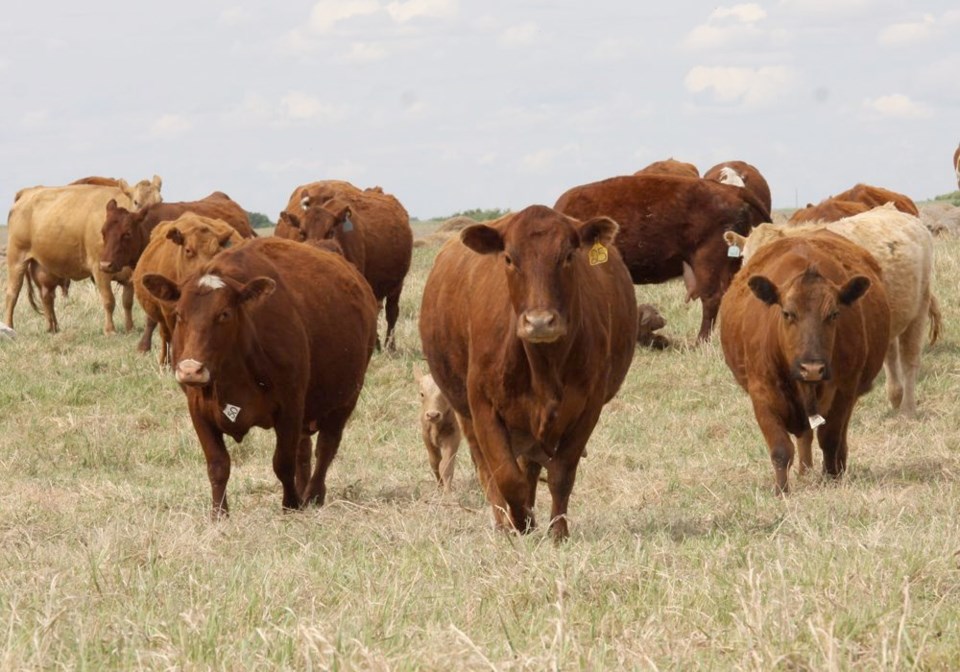WESTERN PRODUCER — I was recently working on a herd investigation that involved neurological symptoms in young calves.
We are suspecting that the symptoms are caused by some sort of toxin because there is no evidence of infectious disease.
At the time that I am writing this column, I still don’t have a definitive diagnosis, but the case got me thinking about toxic events in beef cattle.
We are fortunate to have toxicology testing available at our diagnostic lab in Saskatchewan and to have the expertise of toxicologists that help us with these cases.
We are approaching the time of year when lead poisoning is commonly seen in beef cattle in Western Canada. Although lead poisoning can be seen at any time of year, in my experience, the most common scenario is cow-calf pairs being turned out on a pasture where there are discarded batteries present.
The salts on a lead battery are extremely appealing to cattle and it is amazing how quickly cattle can discover the discarded batteries hidden in some corner of a pasture. Often the owners have rented a new pasture or are unaware of the presence of the batteries and the first sign is cows or calves with severe neurological signs.
The most common signs associated with lead toxicity are blindness, diarrhea, and lack of co-ordination. Affected animals may show spasmodic chewing and salivation, head pressing, or seizures. In some cases, the animals may die quickly before signs can be observed.
In most of these outbreaks, there are almost always some animals that may have consumed lead and yet don’t show any clinical signs. The concern is that if these animals enter the food chain, they could potentially cause a food safety issue because of the higher lead levels in their tissues.
Recently, one of our graduate students at the Western College of Veterinary Medicine, Dr. Caitlyn Best, compiled the data from some of our lead toxicity investigations that occurred between 2007 and 2019.In these investigations, the average percentage of clinically affected animals with signs of lead toxicity was approximately 4.3 percent of the herd. However, there was a wide range of clinical cases, which varied between less than one percent to as high as 28 percent of the herd being affected with clinical signs. These animals would have either died or shown some of the common neurological symptoms that we associated with lead toxicity.
Her paper was recently published in the Canadian Veterinary Journal.
Within these 12 cow-calf herds, we tested 1,104 animals that did not show any clinical signs of lead toxicity but were in the same pastures or pens with animals that were clinically diagnosed with lead toxicity. Forty-nine of these 1,104 animals with no clinical signs (4.4 percent) showed either elevated or toxic levels of blood lead in their samples.
In one herd, the percentage of subclinical cases of lead toxicity (animals with elevated blood lead levels with no clinical signs) was as high as 15 percent of the animals sampled.
The half-life of blood lead has been reported as very variable. Some studies have suggested that the half-life is as low as 10.5 days, while other studies have calculated much higher half-life values.
These higher estimates of the half-life of lead in cattle are probably due to pieces of lead remaining in the reticulum (first stomach) of the cattle and allowing lead to be slowly absorbed over time, prolonging the half-life.
Blood lead levels may not be an ideal indicator for tissue lead levels, but they are the only test we have available for live animals.
Blood lead testing can be expensive and if your herd has already had animals die of clinical lead toxicity, the last thing many producers want is to spend more money to find other animals that should be kept out of the food chain.
However, it is an important food safety issue and, in some provinces, there may be funding to help pay for the testing.
Another part of Best’s study was to evaluate the economics of pooled testing, where blood samples from several animals can be pooled together to reduce the cost of testing. Her conclusions were that potentially pooling a small number of blood samples (five or fewer) would still detect these subclinical cases of high lead levels and help to reduce the cost of testing.
This study demonstrates the importance of testing animals for lead levels following an outbreak of lead toxicity. Animals that may appear clinically normal, or that survived the initial clinical episode, may still have unacceptable lead levels for a prolonged time.
The food safety implications of these exposures cannot be ignored. It is important to remember that we are producing food and not just cattle.
If you have a situation that may involve lead toxicity in your cattle, work with your local veterinarian to test other animals that may have had exposure to lead to ensure they don’t enter the food chain.
John Campbell is a professor in the department of Large Animal Clinical Sciences at the University of Saskatchewan’s Western College of Veterinary Medicine.

